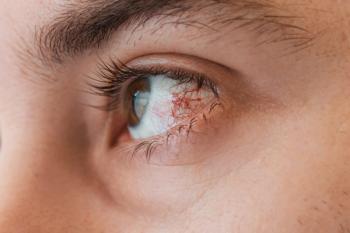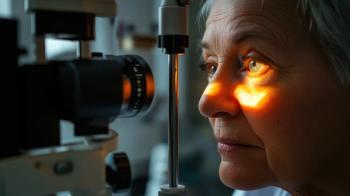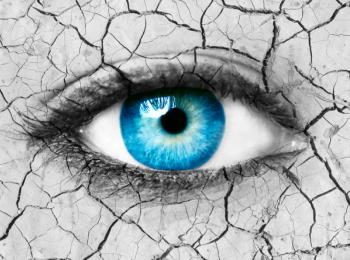
Researchers Discover Link Between Cholesterol and Diabetic Retinopathy
MSU researchers are hopeful that this new insight about cholesterol crystals in the retina could provide an opportunity for earlier diagnosis and treatment of diabetic retinopathy.
Diabetes and other metabolic disorders can lead to a buildup of cholesterol in the retina, which can contribute diabetic retinopathy, according to research done by investigators at Michigan State University (MSU). Diabetic retinopathy affects the blood vessels in the retina and can cause vision loss and blindness.
Cholesterol buildup can lead to the development of crystal deposits, and patients with diabetes are at risk for developing these crystals, researchers wrote in a paper published in the journal
“Retinopathy is the leading cause of preventable blindness and one of the most feared complications of type 1 and type 2 diabetes,” Julia V. Busik, Ph.D., MSU professor emeritus of physiology and one of the study's authors, said in a
The cholesterol crystals in the retina are similar to the atherosclerotic plaques that can form in arteries and cause heart attacks. George Abela, chief of the MSU division of Cardiology, has identified ways to scan retinas using modified tissue preparation for scanning electron microscopy (SEM). This also helps researchers analyze the composition of the crystals.
MSU researchers are hopeful that this new insight could provide an opportunity for earlier diagnosis and treatment of diabetic retinopathy. Crystalized deposits, they said, are reflective and can be seen in images of the retina.
Researchers aimed to identify cholesterol crystals human diabetic retina, as well as pig and mouse retinal tissue. They found that cholesterol crystals were able to be identified in all cell cultures.
In the human samples, scanning electron microscope was used to identify the crystals. SEM is a microscope that uses electrons instead of light to form an image. Diabetic retinopathy was confirmed by medical records and with optical coherence tomography (OCT) imaging, which uses light waves to take a cross-section picture of the retina.
Researchers also performed an analysis of the element structure of the crystals to confirm that they were cholesterol based. Results were confirmed in both the diabetic mouse model and prediabetic pig model.
Although this study confirms the link between cholesterol and diabetic retinopathy, researchers said that additional studies are needed to show the role cholesterol crystals play in the development of diabetic retinopathy, as well as a potential treatment targeting the crystals.
In the mouse tissue, treatment with alpha cyclodextrin was able to remove the cholesterol crystals. Alpha cyclodextrin is a fiber from corn starch that can to bind to triglycerides.
The study was funded by the National Eye Institute and included contributions from researchers at the University of Alabama at Birmingham, Case Western Reserve University and Western University of Health Sciences.
Newsletter
Get the latest industry news, event updates, and more from Managed healthcare Executive.






















































